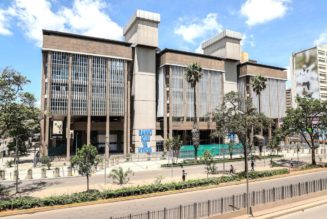Columnists
How a stable supply chain can brew more cash from Kenya’s tea
Wednesday January 31 2024

Workers pick tea leaves at a farm. FILE PHOTO | JOSEPH KANYI | NMG
Kenya is the third largest tea producer in the world, a badge we don with honour that can be preserved by ensuring the security of its supply chain. As one of the largest tea exporters in the world, the security of the supply chain directly impacts the realisation of the tea sector’s full economic potential but with appropriate interventions, the sector’s sustainability and value creation can be enhanced.
Supply chain threats include unpredictable weather and climate change impacts, fluctuation of tea prices, high cost of production, logistical challenges, and market access.
The bulk of Kenyan tea is sold through export and the sales are either by auction or through forward contracts with global buyers.
Substantially higher volumes are sold via the auction than direct sales and the Kenyan system provides the advantage of easing access to the teas by multiple buyers through consolidating tea from other Eastern African producers.
Currently, the effects of stipulation of a reserve price at the auction are being felt by all players underscoring the need for effective interventions. Aside from placing local tea producers at a disadvantage compared to other regional producers, the risks of market disruption are high and likely already here with us.
In 2020, unsold teas at the auction per sale averaged 11 percet kilogrammeds, but the stipulation of a reserve price nationally has seen weekly unsold teas averaging 40 percent between 2021 and 2023. This tea is re-offered for sale and as at 22nd January, 2024, a historical volume of 20 million kilogrammes of tea was due to be offered at the sale.
Locally, high volumes of tea continue to be produced, making a strong case for the need to expand markets. With heavy rains, farmers and producers countrywide are presently obtaining heavy crop and this is evidenced by data from the Tea Board of Kenya showing that tea output has increased by about 43 percent between 2010 to 2021. Strategic direction for the sector is, therefore, needed to ensure good value is created and distributed sustainably.
Undoubtedly, securing incomes for farmers and the sector at large, requires lasting solutions to price challenges, logistical challenges, and the cost of production. Additionally, solving the perennial problems of the industry, will also encourage additional local investment and foreign direct investment which would be a suitable direction in improving the manufacturing and value addition potential in the sector.
The future of Kenya’s tea industry is one of unlimited opportunities as the crop remains one of the most important revenue generators for the economy and strengthening and securing its supply chain will accelerate the country’s progress towards reaping optimum returns from available opportunities.
In 2021, tea exports accounted for approximately 23 percent of Kenya’s foreign exchange earnings despite the many sectoral challenges and a secure supply chain will ensure sustainability, quality output, and increased effectiveness when tapping into additional markets across the world.
The writer is the CEO, Kenya Tea Growers Association (KTGA).









